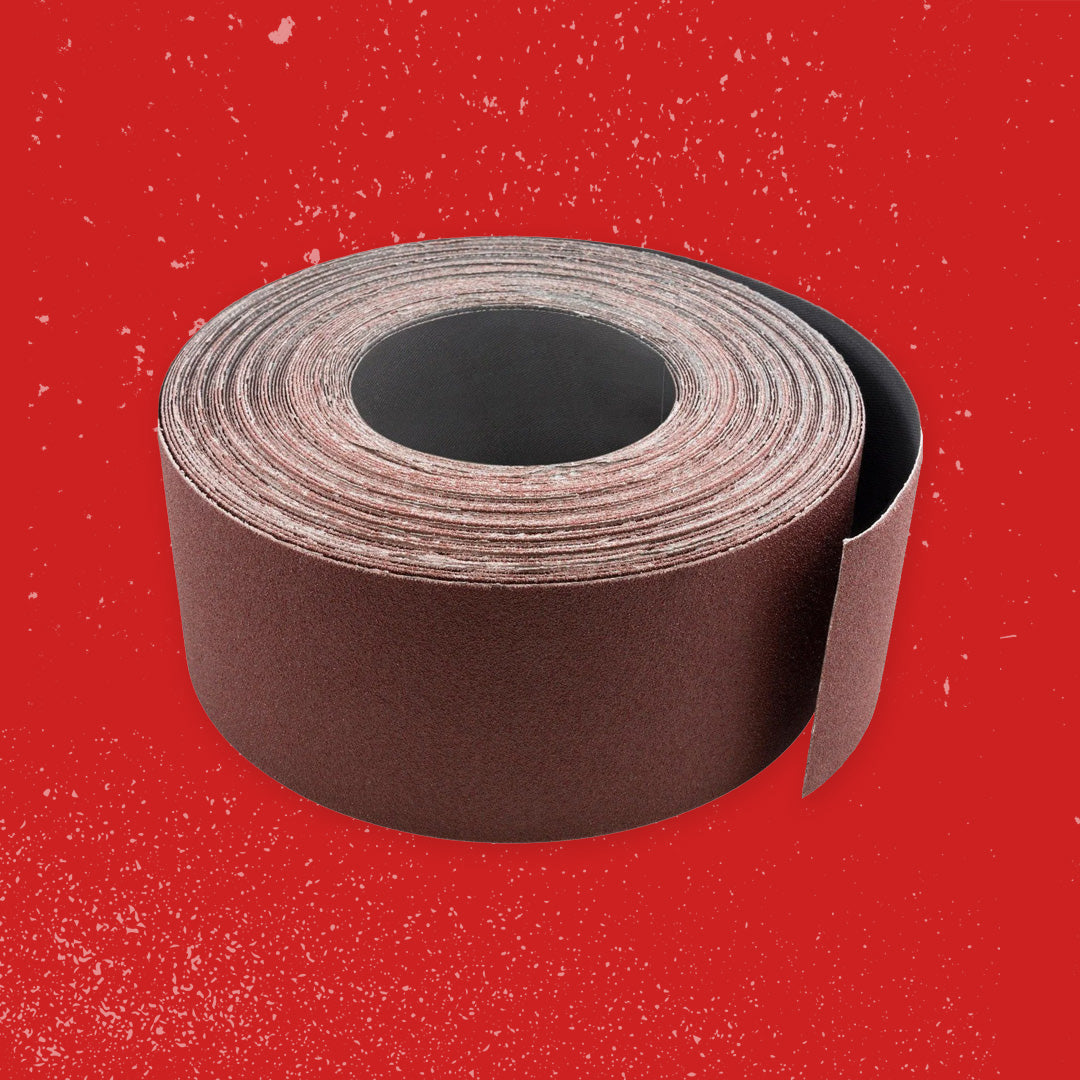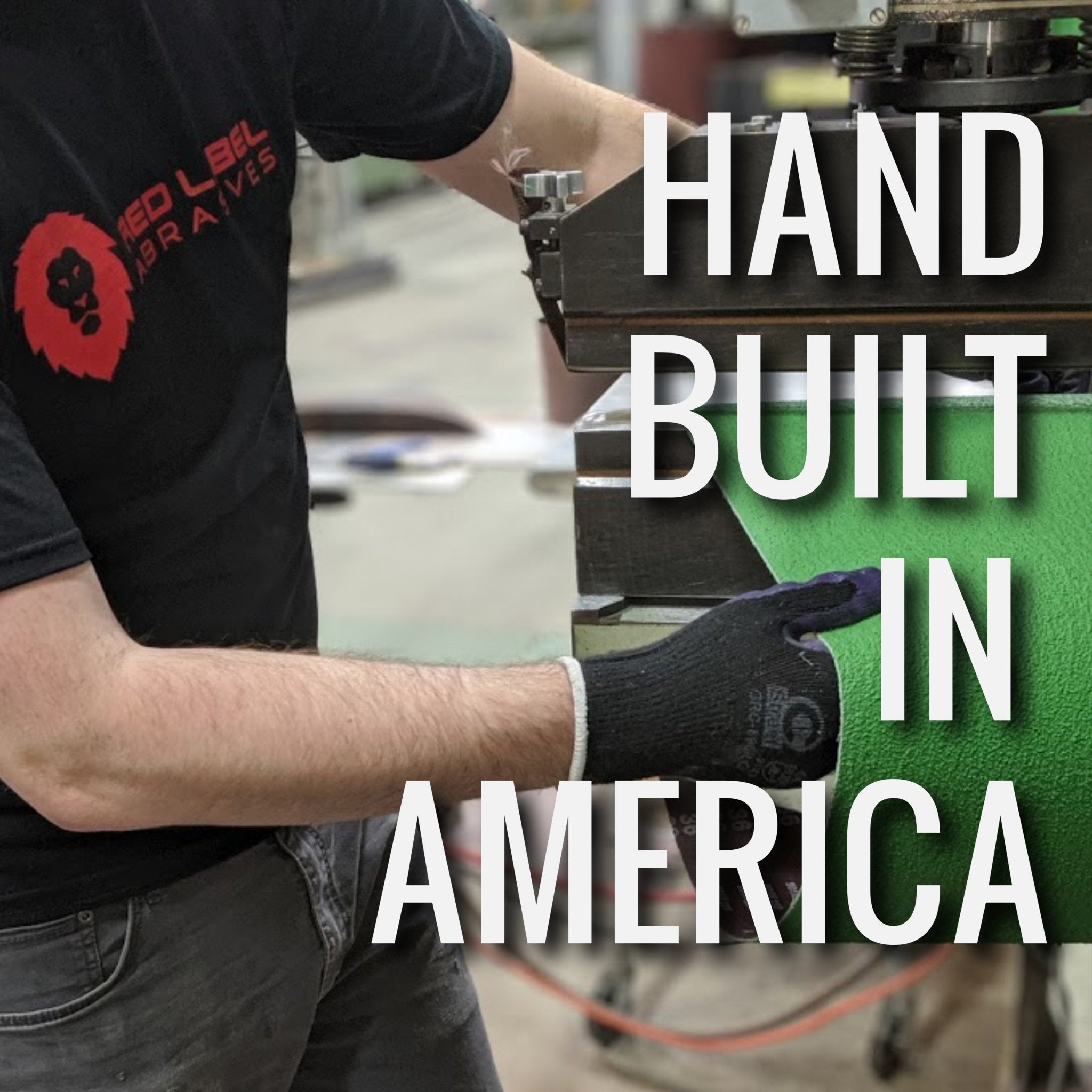Your Cart is Empty
Free Shipping over $150 (Excludes Oversized Products)
Free Shipping over $150 (Excludes Oversized Products)
Sanding Belts
Sanding Discs

Maker Spotlight: Jordan LaMothe
by David Kranker 3 min read

Jordan LaMothe, ABS Journeyman Smith and Forged in Fire Champion (S:4, EP:7), was kind enough to answer some questions about the art of knife making. Read on to learn a bit more about him!
What advice would you give to others looking to get into knife making?
My first bit of advice is to take a knife making class. The craft can look very exciting and romantic from the outside, but you have to fall in love with the process in order to spend the vast amounts of time required to be a good knife maker. A class will help you figure out whether the craft is right for you before you invest in setting up shop.
My second bit of advice is not to be discouraged by the expensive equipment many knife makers use. Very fine knives can be created with just a drill-press, files, and sandpaper (and a way to heat-treat). Work with tools within your means, and spend the time to make a product that pushes your skills, no matter what your setup.
Which types of abrasives / grits do you typically use in your process?
I forge my knives to shape, and do all my rough grinding with 36 grit ceramic belts. I follow the 36 grit belt with a 120 grit ceramic belt, then proceed to polish with structured abrasive belts. I use a succession of three grits, from around 220 grit to 600 grit. After grinding, I hand sand all of my blades, starting at 600 grit on small blades and 400 grit for larger blades.
For wood handles, I use aluminum oxide belts. Typically, I rough in the handle with a 36 grit belt on the platen, then refine the shape with a slack 120 grit J-flex belt. I finish grinding my handles with a very worn 300-600 grit flexible belt, which burnishes the surface of the wood and allows me to go straight to 1000 grit hand sanding paper.
What got you interested in blacksmithing / knife making?
I have always loved making things with my hands, and my desire to make things came hand-in-hand with a fascination with good tools. When I was about fourteen years old, I decided I wanted to learn blacksmithing, so I could create the tools I needed in order to make all of the other things I wanted to make. I started reading blacksmithing books, took a three-day blacksmithing class, and began piecing together my shop. I started with just an anvil, coal forge, and hammer in my parents’ pole barn, and spent the first two years in my shop forging tongs, chisels, punches, and hardy tools, as well as any simple hardware needed on the family farm.
My interest in tool making led me to try my hand at making a knife. A knife is indispensable on a farm; a tool used by most people in the world on a daily basis. I made my first knife at the age of 16 and was immediately taken with the process. I loved the way knife making enabled me to work with many different materials — steel, wood, copper, leather — and with a variety of techniques — forging, grinding, machining, and filing. I made more knives with a firm desire to improve my craftsmanship and hone my skills. I joined the American Bladesmith Society and began going to hammer-ins, absorbing all the information I could, and constantly asking accomplished smiths to critique my work. I am now a full-time bladesmith and a Journeyman Smith in the ABS, and that desire to hone my skills is as present as ever.
Which knife makers inspire and challenge you in your own craft?
There are really too many to name, but I’ll list a few.
Kevin Klein: he has a fantastic sense of design and use of materials
Don Nguyen: sleek blade profiles and handle designs
Julian Antunes: impeccable fit and finish and brilliant pattern welding
Cheers,
Jordan
ABOUT THE AUTHOR
David Kranker is a writer and creative maker who has been covering the abrasive and knife-making industries on the Red Label Abrasives Blog since 2020. David spends his time continually researching sanding and bladesmithing to provide readers with the latest and greatest information. In his free time, David utilizes abrasives for many different home and auto projects at his home in Delton, MI.
Belt Packs Made For Knife Makers

2 X 72 Inch Knife Makers Sanding Belts Assortment

2 X 60 Inch Knife Makers Sanding Belts Assortment

2 X 48 Inch Knife Makers Sanding Belts Assortment

2 X 36 Inch Knife Makers Sanding Belt Assortment

2 X 42 Inch Knife Makers Sanding Belts Assortment

1 X 30 Inch Knife Makers Sanding Belts Assortment

1 x 42 Inch Knife Makers Sanding Belt Assortment
Shop By Product Category





Why Choose Red Label?







